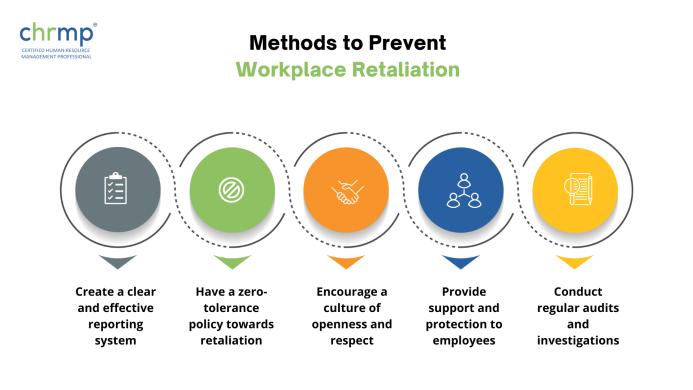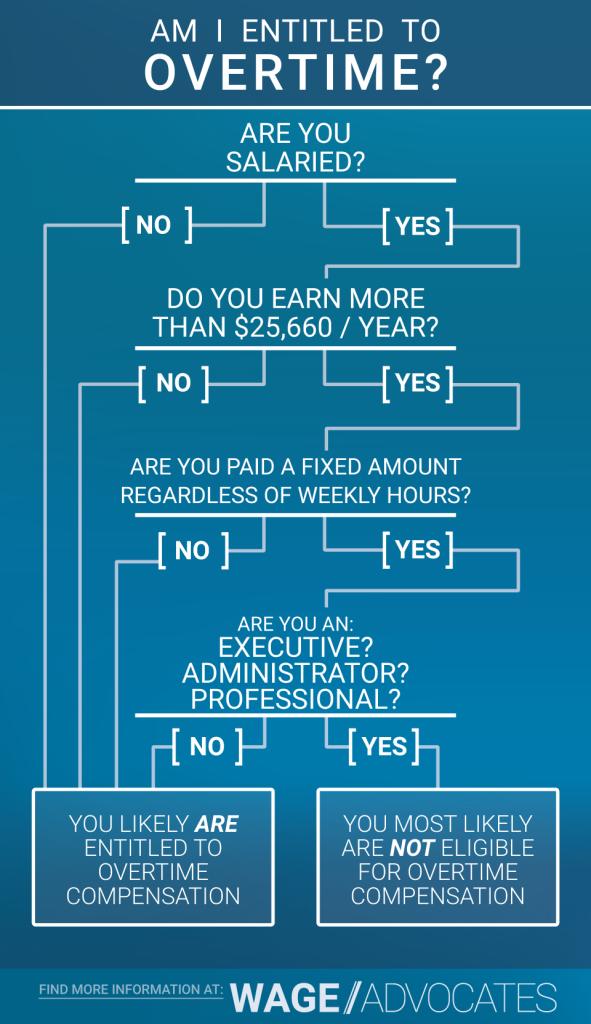
Navigating OFCCP Compliance: Your Essential Guide for Federal Contractors
Securing a federal contract can be a game-changer for any business, opening doors to significant opportunities and growth. However, with these opportunities come important responsibilities, particularly when it comes to workplace equity and non-discrimination. For federal contractors, understanding and adhering to the regulations set forth by the Office of Federal Contract Compliance Programs (OFCCP) isn’t just good practice—it’s a legal imperative.
This comprehensive guide is designed to demystify OFCCP compliance, making it easy for beginners to understand what it is, why it matters, and how to ensure your organization meets its obligations.
What is the OFCCP and Why Does It Matter to You?
The Office of Federal Contract Compliance Programs (OFCCP) is an agency within the U.S. Department of Labor. Its primary mission is to enforce the contractual promises of equal employment opportunity and affirmative action required of those who do business with the federal government.
Think of it this way: when you sign a contract with the federal government, you’re not just agreeing to deliver a product or service; you’re also agreeing to uphold certain standards regarding how you treat your employees and applicants. The OFCCP is the watchdog that ensures these promises are kept.
Why does it matter to you as a federal contractor?
- Legal Obligation: Compliance isn’t optional; it’s a legal requirement embedded in your contract.
- Avoid Penalties: Non-compliance can lead to severe consequences, including fines, contract termination, and even debarment (being banned from future federal contracts).
- Promote Equity: Adhering to OFCCP regulations fosters a fair and inclusive workplace, which benefits employee morale, productivity, and your company’s reputation.
- Risk Management: Proactive compliance helps you identify and address potential discrimination issues before they become costly legal battles.
Are You a Federal Contractor? Understanding the Thresholds
Not every business that interacts with the federal government falls under the full scope of OFCCP regulations. The level of compliance required depends on the type and value of your federal contracts or subcontracts, and the number of employees you have.
Generally, you are considered a federal contractor if:
- You hold a federal contract or subcontract.
- You receive federal funds for services.
- You serve as an issuing agent for U.S. savings bonds and notes.
- You are a depository of federal funds.
The specific compliance obligations kick in at different monetary thresholds, primarily related to three key regulations enforced by the OFCCP. It’s crucial to remember that if you have multiple smaller contracts that, when combined, meet a threshold, you might still be covered.
The Three Pillars of OFCCP Compliance: Key Regulations
The OFCCP enforces three main laws that require federal contractors to provide equal employment opportunity and take affirmative action. These are often referred to as the "three pillars":
1. Executive Order 11246 (E.O. 11246)
- What it covers: Prohibits federal contractors and subcontractors from discriminating based on race, color, religion, sex, sexual orientation, gender identity, or national origin. It also requires contractors to take affirmative action to ensure equal opportunity.
- Who it applies to:
- Non-discrimination: Applies to all federal contractors and subcontractors with contracts of $10,000 or more.
- Affirmative Action Plan (AAP): Applies to federal contractors and subcontractors with 50 or more employees and a single contract or aggregate contracts of $50,000 or more. These contractors must develop and maintain a written Affirmative Action Plan (AAP).
2. Section 503 of the Rehabilitation Act of 1973 (Section 503)
- What it covers: Prohibits federal contractors and subcontractors from discriminating against qualified individuals with disabilities. It also requires them to take affirmative action to employ and advance in employment individuals with disabilities, and to provide reasonable accommodations.
- Who it applies to:
- Non-discrimination: Applies to all federal contractors and subcontractors with contracts of $10,000 or more.
- Affirmative Action Plan (AAP): Applies to federal contractors and subcontractors with 50 or more employees and a single contract or aggregate contracts of $50,000 or more. These contractors must develop and maintain a written AAP for individuals with disabilities. This includes a 7% utilization goal for individuals with disabilities across all job groups.
3. Vietnam Era Veterans’ Readjustment Assistance Act of 1974 (VEVRAA)
- What it covers: Prohibits federal contractors and subcontractors from discriminating against protected veterans. It also requires them to take affirmative action to employ and advance in employment protected veterans.
- Who it applies to:
- Non-discrimination: Applies to all federal contractors and subcontractors with contracts of $10,000 or more.
- Affirmative Action Plan (AAP): Applies to federal contractors and subcontractors with 50 or more employees and a single contract or aggregate contracts of $100,000 or more. These contractors must develop and maintain a written AAP for protected veterans. This includes an annual hiring benchmark for protected veterans.
Key Takeaway: While all federal contractors with contracts over $10,000 must comply with the non-discrimination provisions, the requirement to develop a written Affirmative Action Plan (AAP) generally applies to those with 50 or more employees and contracts exceeding the specific monetary thresholds mentioned above.
Key Areas of Compliance: What OFCCP Looks For
When the OFCCP conducts a compliance review (audit), they are looking for evidence that your organization is meeting its obligations in several critical areas:
-
Non-Discrimination in All Employment Practices:
- Hiring: Fair applicant screening, interviewing, and selection processes.
- Compensation: Equitable pay practices regardless of protected characteristics.
- Promotions: Non-discriminatory opportunities for advancement.
- Terminations: Fair and consistent disciplinary actions and layoff decisions.
- Benefits & Other Terms/Conditions of Employment: Equal access and treatment.
-
Affirmative Action Plan (AAP) Development & Implementation:
- For E.O. 11246 (Race, Sex, etc.): An analysis of your workforce, identification of underutilization (where protected groups are employed at a lower rate than their availability in the qualified labor pool), and establishment of goals to address these disparities.
- For Section 503 (Disability): A clear policy statement, a 7% utilization goal, review of personnel processes, and efforts to make reasonable accommodations.
- For VEVRAA (Veterans): A policy statement, establishment of an annual hiring benchmark (either based on the national average or your own data), and specific outreach efforts.
-
Recordkeeping:
- Maintaining applicant flow data (who applied, who was interviewed, who was hired, and their race/ethnicity, sex, disability, veteran status).
- Records related to compensation, promotions, terminations, and accommodations.
- Documentation of outreach efforts to protected groups.
- Keeping AAPs updated annually.
-
Data Analysis:
- Regularly analyzing applicant, hire, promotion, and termination data to identify potential adverse impact on protected groups.
- Conducting annual compensation analyses to ensure pay equity.
-
Reasonable Accommodation Process:
- For individuals with disabilities (Section 503), having a clear process for handling requests for reasonable accommodation and implementing them where feasible.
-
Outreach and Recruitment:
- Documented efforts to reach out to diverse talent pools, including individuals with disabilities and protected veterans. This could involve partnering with disability organizations, veteran groups, and minority-serving institutions.
-
Posting Requirements:
- Displaying the "EEO is the Law" poster and supplemental posters in prominent places.
The Affirmative Action Plan (AAP) Explained
If your company meets the thresholds for an AAP, this is a cornerstone of your OFCCP compliance. It’s important to understand that an AAP is not a quota system. Instead, it’s a management tool designed to ensure equal employment opportunity.
Key Components of an AAP:
- Workforce Analysis: A detailed snapshot of your current workforce by job group, race, sex, disability status, and veteran status.
- Job Group Analysis: Grouping similar jobs for analysis purposes.
- Availability Analysis: Determining the availability of qualified minorities, women, individuals with disabilities, and protected veterans in the relevant labor market.
- Utilization Analysis: Comparing your workforce’s representation of protected groups to their availability in the labor market. If your representation is lower than availability, it indicates "underutilization."
- Goals: Where underutilization exists, measurable placement goals are established to increase the representation of underutilized groups. These are targets, not quotas, and reflect a commitment to good faith efforts.
- Action-Oriented Programs: Specific steps your organization will take to achieve its goals, such as targeted recruitment, training programs, and mentorship.
- Internal Audit and Reporting Systems: Mechanisms to monitor the effectiveness of your AAP and make adjustments as needed.
- Reasonable Accommodation Procedures: For individuals with disabilities.
- Outreach and Positive Recruitment: Specific strategies for attracting and hiring individuals with disabilities and protected veterans.
Important Note: AAPs must be updated annually. This isn’t a one-time project; it’s an ongoing commitment.
Preparing for an OFCCP Compliance Review (The Audit Process)
The thought of an OFCCP audit can be daunting, but understanding the process can help alleviate anxiety and ensure you’re prepared.
Typical Stages of a Compliance Review:
-
Scheduling Letter: You will receive a formal letter from the OFCCP notifying you of the review and requesting specific data and documents, typically within 30 days. This initial request is extensive and often includes:
- Your Affirmative Action Plans (AAPs).
- Applicant flow data.
- Hiring, promotion, and termination data.
- Compensation data.
- Documentation of outreach efforts.
- Reasonable accommodation requests.
-
Desk Audit: The OFCCP initially reviews the submitted documents off-site. They analyze your data for patterns of potential discrimination or non-compliance with affirmative action requirements.
-
On-Site Review (If Necessary): If the desk audit raises concerns, the OFCCP may conduct an on-site visit to:
- Interview employees and managers.
- Review additional records.
- Observe facilities.
- Discuss findings and potential issues.
-
Concerns and Preliminary Findings: If the OFCCP identifies potential violations or areas of concern, they will communicate these to you, often with a "Notice of Violation" or "Notice of Results of Investigation." You will have an opportunity to respond and provide additional information or explanations.
-
Resolution:
- Conciliation Agreement (CA): If violations are found, the OFCCP will seek to enter into a Conciliation Agreement, which is a legally binding document outlining corrective actions the contractor must take (e.g., back pay, policy changes, training).
- Notice of Intent to Debar (NID): If a Conciliation Agreement cannot be reached, or if the contractor fails to comply, the OFCCP can issue an NID, which is a precursor to debarment.
- Administrative Enforcement: In rare cases, if all other resolution attempts fail, the OFCCP can pursue enforcement actions through administrative hearings, which can lead to debarment.
Common Pitfalls and How to Avoid Them
Even well-intentioned contractors can stumble. Here are some common OFCCP compliance pitfalls and how to steer clear:
- Lack of Awareness: Not knowing which regulations apply or what the current requirements are.
- Solution: Regularly check OFCCP’s website, subscribe to their newsletters, and consider professional training.
- Outdated or Incomplete AAPs: Not updating AAPs annually or missing required components.
- Solution: Dedicate resources to annual AAP development and ensure all mandated elements are included.
- Poor Recordkeeping: Inaccurate, incomplete, or missing applicant/employee data.
- Solution: Implement robust HRIS systems, clear data collection procedures, and train staff on proper recordkeeping.
- Inconsistent Application of Policies: Applying policies differently to different employees, which can lead to disparate treatment.
- Solution: Ensure policies are clearly written, communicated, and applied consistently across the board.
- Lack of Data Analysis: Not regularly reviewing applicant flow, hiring, promotion, and compensation data for adverse impact.
- Solution: Conduct proactive internal audits and statistical analyses of your employment data.
- Ignoring Reasonable Accommodation Requests: Failing to engage in the interactive process or denying legitimate accommodation requests.
- Solution: Train managers on how to recognize and respond to accommodation requests and have a clear, documented process.
- Insufficient Outreach: Not documenting efforts to recruit protected veterans and individuals with disabilities.
- Solution: Keep detailed records of all outreach activities, including partnerships with relevant community organizations.
Best Practices for Ongoing OFCCP Compliance
Compliance is an ongoing journey, not a destination. By embedding these best practices into your organizational culture, you can build a strong foundation for success:
- Designate a Compliance Officer: Assign a dedicated individual or team responsible for overseeing OFCCP compliance.
- Regular Training: Provide ongoing training to HR staff, recruiters, hiring managers, and senior leadership on OFCCP requirements, non-discrimination, and affirmative action principles.
- Robust Recordkeeping Systems: Invest in HR software and processes that facilitate accurate, comprehensive, and easily retrievable data on applicants, employees, and employment actions.
- Proactive Self-Audits: Don’t wait for the OFCCP to audit you. Conduct internal compliance reviews regularly to identify and correct issues before they become problems.
- Stay Informed: OFCCP regulations and guidance can change. Subscribe to OFCCP updates, follow industry news, and engage with professional organizations.
- Seek Expert Help: If you’re unsure about any aspect of compliance, consider consulting with an experienced OFCCP compliance attorney or consultant. They can help develop AAPs, conduct mock audits, and provide guidance during a review.
- Foster a Culture of Inclusion: Beyond mere compliance, strive to create a workplace where diversity is valued, and all employees feel respected and have equal opportunities to succeed.
Conclusion
Understanding and mastering OFCCP compliance is more than just a regulatory hurdle; it’s an investment in your company’s future. By proactively embracing the principles of equal employment opportunity and affirmative action, federal contractors not only safeguard their business against potential penalties but also cultivate a more equitable, diverse, and productive workforce.
Start by understanding your specific obligations, implement robust processes, and foster a culture of compliance. With diligence and the right approach, you can confidently navigate the complexities of OFCCP regulations and thrive as a responsible federal contractor.




Post Comment